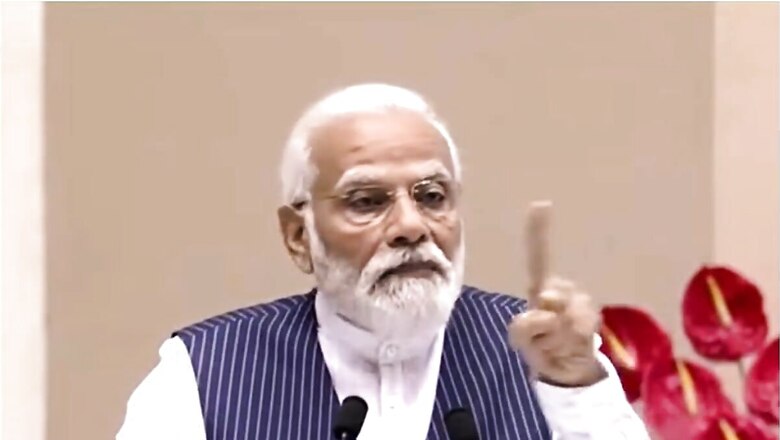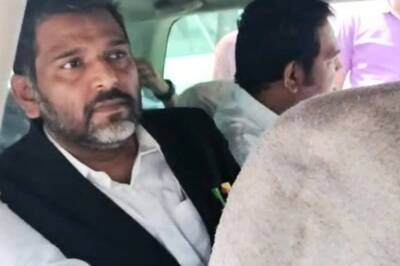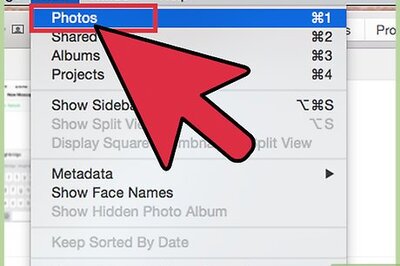
views
After a gap of many years, Narendra Modi this Thursday will be back to doing what he did for 13 years as the Gujarat chief minister – speaking personally to the people of his home state whose grievances he had resolved while he was CM.
It will mark 20 years of the SWAGAT (State Wide Attention on Grievances by Application of Technology) portal in Gujarat, a revolutionary tech-based platform that Modi launched as the chief minister two decades ago to bring the highest elected authority in the state, the CM, face to face once a month with people who had grievances with the government or the system.
What’s in store
On April 27, Modi as the Prime Minister will interact virtually at 4 pm with the old SWAGAT applicants whose grievances he had resolved as the CM. He will also address other participants. The much-hailed public grievance system has been working remarkably in Gujarat ever since with nearly 5.64 lakh applications received on it to date and 99.91% of them resolved, News18 has learnt.
“It should be noted that Modi thought of such a tech-based platform 20 years ago when not many had imagined it. It was in 2003, a time when the world was gearing up for digital and tech revolution that Narendra Modi realised the potential of technology to promote ease of living and bring people closer to the administration. At that time, there was no structured system for citizens to submit grievances, remotely located applications were at a disadvantage, and there was a lack of accountability and transparency due to a lot of paperwork,” an official said, explaining the challenges.
Modi rolled out a system whereby every fourth Thursday of the month at 3 pm, he would let applicants come face to face with him with their complaints. “The solution was found on the spot and the applicant could counter the administrative official version. The whole idea was to bring all stakeholders on the same platform,” an official explained to News18.
The focus of SWAGAT has been on the quality of outcomes and qualitative resolution of complaints. The CM interacts personally so greater attention comes to resolving cases successfully, officials explain. Before the PM speaks to old SWAGAT applicants on April 27 at 4 pm, chief minister Bhupendra Patel will interact with regular SWAGAT applicants as usual at 3 pm the same day.
Officials explained that some new upgrades are being done for SWAGAT, like having a CM Dashboard, WhatsApp Bot, and a provision for applicants for emailing grievances to the platform.
The way forward for SWAGAT is also going to be its integration of the CM Dashboard and Jan-Samvad unit, taking feedback from applicants randomly through the Jan-Samvad unit, using artificial intelligence to analyse trends in grievances, and devising policy recommendations using 20 years of the Jansampark data.
How has SWAGAT worked?
The platform has worked at four levels – the state level where the CM interacts in person with applicants with district and sub-district officers on a video link.
These are problems that are not solved at lower levels or require policy-level decisions. An applicant can approach the CMO earlier that day and district and sub-district level officers have to enter their responses by 3 pm. The cases are redressed the same day or in a timebound manner and directions by the CM are formally recorded the same day.
SWAGAT also started a district-level mechanism at 33 district offices, a sub-district level mechanism at 248 sub-district offices, and village level at nearly 14,000 villages. The District SWAGAT was launched in 2008 along with Taluka Swagat for providing an effective medium at the grassroots to provide solutions.
The Village SWAGAT was launched subsequently in 2011 by Narendra Modi.
The portal at all levels has received close to 6 lakh applications to date and most have been resolved at the local level. The maximum applications came regarding departments like revenue and panchayat.
There was a case last year when an applicant filed a complaint for his missing daughter at the State Level SWAGAT with the CM in 2022. According to the applicant, his daughter was lured away from a university hostel by a person with a criminal history. This put his daughter’s life in danger. A request was made to trace the applicant’s daughter. The CM immediately directed concerned officers to take prompt action. The daughter returned home safely within a short period of time, officials said.
SWAGAT is a simple and hassle-free tool for people. The applicant has to file the application on the online portal and he or she is given a unique ID to access case details and status online. The review at the highest level is done based on the problems solved and not on the number of petitions disposed of.
One of the most important aspects of the SWAGAT programme is that it allowed the common people to connect with the chief minister directly.
Read all the Latest India News here



















Comments
0 comment